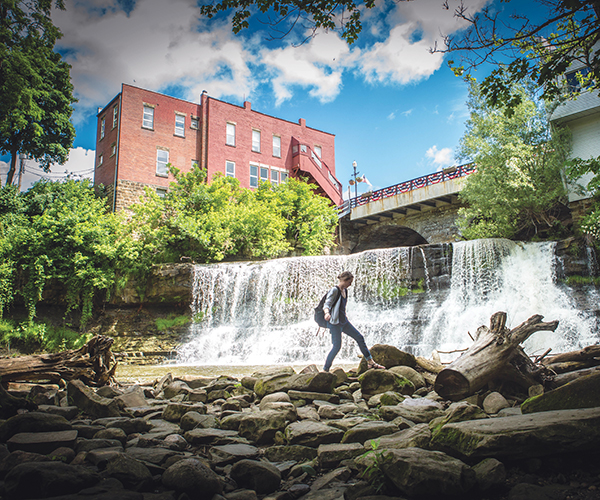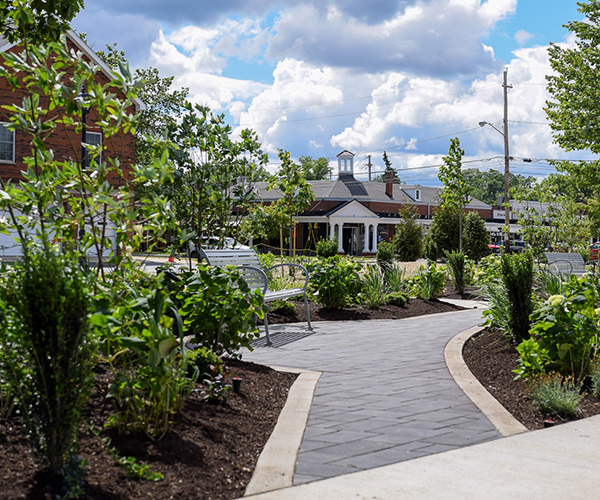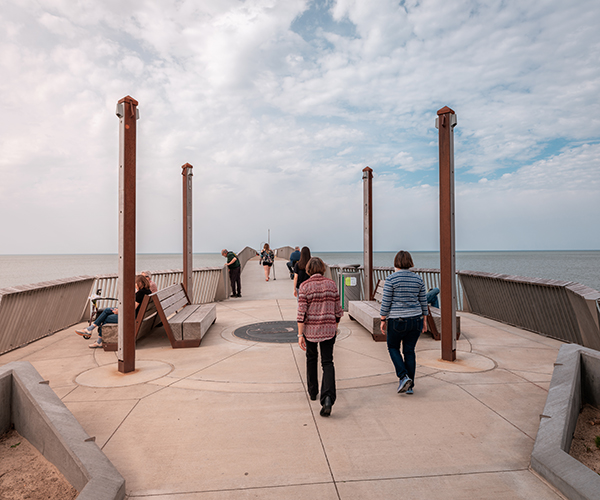Matt and Michele Toomey's first neighborhood off Mayfield Road in Lyndhurst was filled with starter homes and younger families who moved there for its convenience and charm. Close to a park and the city pool, their home was tucked on a side street, so their children were safe from traffic. "I could look out my door and watch my kids walk to the park and pool," Matt says. "That was a huge selling point."
Like many young couples, the Toomeys weren't hunting for the biggest house on the block when they bought their starter home 10 years ago. With a 3-year-old daughter, a baby on the way and brand-new careers, the couple opted for a close-knit bedroom community rather than a pricey plot in an exurb. "We didn't want to get a big house and not be able to afford anything else," Matt remarks.
| Rank | Community | Safety Ranking | Education Ranking | Media Home Sale Price (2004) |
|
1 |
Willoughby | 3 | 31 | $139,750 |
|
2 |
Eastlake | 24 | 31 | $123,250 |
|
3 |
Mayfield Heights | 19 | 7 | $139,000 |
|
4 |
Wickliffe |
34 (Tie) |
28 | $130,000 |
|
5 |
North Olmsted | 39 | 21 | $155,000 |
|
6 |
Lyndhurst | 22 | 23 | $152,000 |
|
7 |
Brook Park | 44 | 22 | $127,000 |
|
8 |
Willowick | 28 | 31 | $128,250 |
|
9 |
South Euclid | 49 | 23 | $124,000 |
|
10 |
Berea | 43 | 22 | $127,250 |
The Toomeys share priorities with many Northeast Ohioans, who are looking for modest homes with moderate price tags. This year, we present a list of the 10 best bargains among Cleveland's suburbs (see box). We took the 30 suburbs with the lowest median home sale values (which turned out to be $155,000 or less) and rated them the same way we compile our overall rankings ¯ by measuring factors that contribute to a town's quality of life, especially strong schools and safe streets.
Our best bargains range from Willoughby, Mayfield Heights and Lyndhurst on the east to Brook Park, North Olmsted and Berea on the west. Many of these suburbs are older, well-established communities.
They're full of cozy homes in tight-knit neighborhoods, close to entertainment, shopping, work and, often, downtown Cleveland — all qualities that make them attractive to many young house hunters. In fact, some older, modestly priced suburbs are actually watching their populations grow younger.
Janice Lipscomb paints a profile of who moves to Willoughby, our No. 1 bargain, where she is community development manager. "Someone who relishes the social interaction of neighbors," she says, "because we have sidewalks and tree-lined streets, and it's not unusual to see someone walking from their home to downtown on the weekend to get an ice cream cone."
Margaret Egensperger, mayor of Mayfield Heights, our No. 3 bargain suburb, says seniors on her block are downsizing to condominiums and moving south, creating opportunities for first-time homebuyers. "Across the street from me, a gentleman lost his wife and put the house up for sale," she relates. "Three days later, it sold to a young couple."
In Brook Park (No. 7), where most homes were built in the 1950s and 1960s, Mayor Mark Elliott says seniors make up a quarter of the city's residents: "We are a community that is aging and we have our share that choose to stay here for a long time." Elliott says 28 percent of those who purchased homes in Brook Park before 1970 have stayed. But when "For Sale" signs crop up in Brook Park, young couples can snag a real estate steal in a community with strong schools and services.
Often, smaller homes appeal to young professionals and married couples, whose lives are packed with commitments that pull them away from house upkeep. "As the world of work is changing and those with careers put in longer hours, they have less time to devote to their homes," explains Tom Bier, director of the Center for Housing Policy at Cleveland State University.
Single women, a growing demographic in today's real estate market, are also attracted to such suburbs, points out Angie Molitoris, an agent with Realty One who specializes in homes in Mayfield Heights and Lyndhurst (No. 6), generally in the $150,000 range, which were built between the late 1940s and the early 1960s.
"They are realizing that they don't have to wait to get married to buy a house," Molitoris says. Low interest rates have drawn many young singles to houses rather than apartments.
Meanwhile, divorced singles hunting for cost-effective housing find their comfort zones in older neighborhoods. "[Many] want to move back to where they came from, and price is definitely an issue," Molitoris says.
Bungalows also are a bright idea for inventive, amateur interior decorators. Homeowners can revamp old ranches and update starter homes into spaces that fit modern lifestyles. Cal Caminati, economic development manager for South Euclid, our ninth-ranked bargain, calls this the "HGTV phenomenon." These renovations hike up housing values, which help their communities keep up with the younger suburbs that offer more developable land.
There isn't much space to sprawl in Cleveland's older suburbs. Caminati says South Euclid does have some empty lots for construction. "Most people don't think of South Euclid as having vacant space," he says. "You have to look for it, but it's there."
Other communities, such as Brook Park, are built to the brim. When the city cleared land on an old school property and developed 40 single-family homes — the first housing construction effort in the town since 1960 — the colonial, Cape Cod and ranch styles catered to families. The idea was to give residents looking outside the community a chance to stay. "The only reason you move away [from Brook Park] is to have a bigger home and more property," Elliott asserts.
"Some of the older neighborhoods were built in the age of the streetcar," points out David Beach, executive director of EcoCity Cleveland. "That is where you find that old-fashioned Main Street feel, and you can actually walk to stores, restaurants and movies, and many people value that."
What about schools and safety? Beach points out that older suburbs are often more diverse — racially, religiously and economically — and that can work to students' advantage. Many kids in Cleveland Heights say going to school with a melting pot of classmates gives them a perspective that helps them succeed in prestigious colleges and universities, says Ken Montlack, vice mayor of Cleveland Heights and chair of the Northeast Ohio First Suburbs Consortium, an organization of inner-ring suburbs.
"When those kids go to college and get out in life, they invariably come back and say, 'I was with kids who only grew up in a racially or economically isolated place, and it's all new to them,' " Montlack says. " 'They don't have the perspective and background that I got from my upbringing.' "
Many families feel comfortable in tighter, denser neighborhoods, where people watch each other's children, are tuned in to the streets' rhythms and notice offbeat incidents. "Singles, especially women who live on their own, might feel more comfortable living in a [dense] neighborhood than one where they are spread out and more distant from neighbors," says Bier.
Closeness is a selling point that's hard to figure into an appraisal. "There is a return to spending time with families and friends — the cocooning effect, almost — and that is why people come to older communities," Lipscomb reasons.



